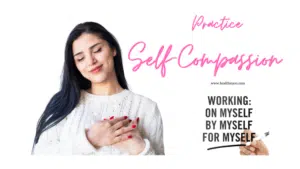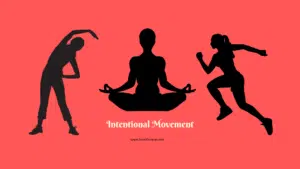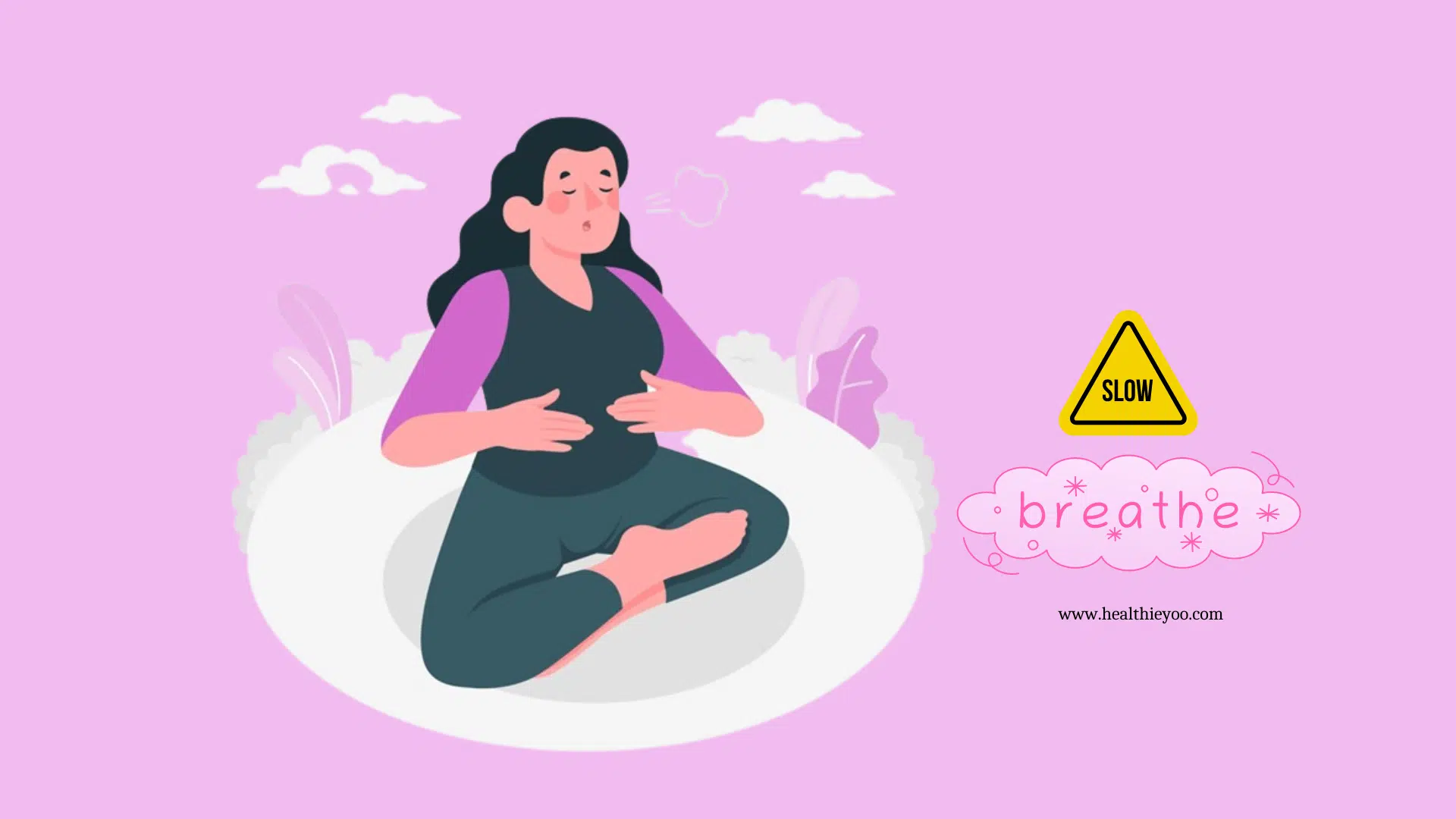As humans, we can live without food and water for weeks, but what we cannot live without is oxygen. Breathing is the highest pleasure in life and is often under looked practice among healthy individuals. To put it simply into terms, breathing is the taking up of oxygen into the lungs and leaving carbon dioxide from your body.
In this fast-moving world, where one says it’s difficult to exercise, eat on time, and in constant stress forget how they’re breathing. Every day is not the same for everyone. As covid teaches us the best lesson of how to take our lungs seriously, we need to drive attention towards taking care of our health.
When we are stressed, we hold our breath and take a shallow breath and that will not satisfy our lungs fully. This puts the body in the default position of rapid breathing which sets the stress response.
Shallow breathing and fast breathing are also influenced by various factors like age, gender, height, body weight, physical activity, environmental exposure, socioeconomic status, and certain conditions like diabetes, hypertension, or genetics. Breathing well can induce relaxation, relieve stress, faster digestion, improve overall wellness, and much more to add to the list.
Let’s dive deep into the topic –
What is slow breathing?
The normal frequency of breathing rate in healthy adults is between 12-16 breaths per minute. The frequency of breathing about 4-8 times per minute is called slow breathing.
Why is slow breathing important for health?
When slowing down breathing, the lungs will be richly filled with air, thus helping to expand fully. With repeated slow breathing calms down the body by stimulating the vagus nerve and shuts down the panic response.
What is breathing shallowly?
Scroll down to know how slow breathing techniques help in some chronic conditions
Effect of slow breathing on Diabetes mellitus:
Diabetes mellitus is a metabolic condition and performing regular slow breathing helps to reduce the Hba1c, fasting plasma glucose, and 2 hours postprandial plasma glucose and improve the overall glycemic status of an individual.
Effect of slow breathing exercises on hypertension:
Effect of slow breathing on anxiety, stress, and depression:
Effect of slow breathing on the gastrointestinal system:
Effect of slow breathing on chronic kidney disease:
When performed prior to dialysis, it significantly improves the quality of life of people who are having kidney disease.
Let us explore the top 5 breathing exercises you can perform anytime anywhere daily
1. Diaphragmatic breathing
As the name suggests, it involves the use of the diaphragm. Find a comfortable place and position –
- Lie on your back with your head supported and your knee bent.
- Place one hand on your belly and the other hand on your chest.
- Slowly breathe in through your nose and feel your abdomen pushes your hands and breathe out through your mouth through pursed lips.
- Practice 3-4 times a day or whenever you find yourself comfortable doing it.
2. 4 -7-8 breathing techniques
This technique works on the counting method.
- Inhale for 4 secs through your nose
- Hold it for 7 secs.
- And exhale for 8 secs through the mouth
3. Deep breathing exercises
- Sit in a comfortable position.
- Inhale through the nose which should be slow and deep
- Exhale through pursed lips
This deep breathing helps to inhibit shallow breathing and initiates the feeling of calmness.
4. Box breathing
Want instant relief from anxiety and stress, try box breathing.
- Imagine you are drawing a box in the air, or grab a pen and start drawing a box
- Sit in a comfortable position.
- Inhale for 4 secs and hold it for 4 secs.
- Exhale for 4 secs and hold it for 4 secs.
5. Coherence breathing
- Sit in a comfortable position.
- Take a deep breath.
- Inhale for 6 secs
- Exhale for 6 secs
This breathing is excellent if you have trouble sleeping. It is easy to practice and doing it right before bedtime helps you fall asleep.
Breathing and health
Breathing is a continuous process. It can be disturbed for many reasons. For e.g., respiratory problems, pain, bad posture, the wrong pattern of breathing, stress after surgeries, etc.
Optimizing breathing is important for maintaining health and well-being.
How can I optimize my breathing?
- Always find a comfortable place and position
- Relax yourself.
- Choose your breathing exercises.
- Let in the air with full effort
- Let air flows out.
- Your lungs should expand to their maximum.
- Try to avoid using chest.
- Place hands on belly for feedback on the right practice
- Start slow, breathing should be slow and rhythmic
- Progress to as many times as you want
Let me share this, in my clinical practice of treating patients the first thing to calm anxious patients is to make them relax. And that’s exactly done by doing breathing exercises.
Breathing exercises do magic when done in the right manner. When someone comes with neck pain, back pain, or incontinence just assess their pattern of breathing, that tells you hidden stories to manage the cause.
5 Bonus tips for you:
1. Breathe in through the nose
Use your nose for breathing rather than your mouth as it contains tiny hairs for cleansing your dirty air and moistening the dry air.
2. Breathe using your belly
Diaphragm is an important muscle for gas exchange and helps to increase 80% of air into the lungs.
3. Exhale for quite a long time
Increasing the exhaling time will signal the brain to relax and sets the relaxation response rather than a frightening response.
4. Breathe slowly
When breathing fast causes panic breathing, slows deep breaths help to reset your sympathetic nervous system
5. Breathe quietly
Noisy breathing has some issues with your lungs. Healthy breathing should be quiet and has a purpose of less effort.
Bottom line:
Breathing has the potential to heal the body and soul. It awakens the spiritual mind and doing it in a slow manner helps to calm down your body, increase energy, improve digestion, relieve stress, induce sleep, and raise your longevity.
We breathe every second and still, it is an underused practice, and I couldn’t agree more. It can heal most health problems.
Practicing breathing exercises should be a lifestyle change for every one of us to reap maximum benefits. Sure, it’s a game changer for anyone if their goal is better health.
Sources –
- Russo MA, Santarelli DM, O’Rourke D. The physiological effects of slow breathing in the healthy human. Breathe. 2017 Dec 1;13(4):298-309.
- Zaccaro A, Piarulli A, Laurino M, Garbella E, Menicucci D, Neri B, Gemignani A. How breath-control can change your life: a systematic review on psycho-physiological correlates of slow breathing. Frontiers in human neuroscience. 2018 Sep 7;12:353.
- Busch V, Magerl W, Kern U, Haas J, Hajak G, Eichhammer P. The effect of deep and slow breathing on pain perception, autonomic activity, and mood processing—an experimental study. Pain Medicine. 2012 Feb 1;13(2):215-28.
- Anderson DE, McNeely JD, Windham BG. Regular slow-breathing exercise effects on blood pressure and breathing patterns at rest. Journal of human hypertension. 2010 Dec;24(12):807-13.
- Naik GS, Gaur GS, Pal GK. Effect of modified slow breathing exercise on perceived stress and basal cardiovascular parameters. International journal of yoga. 2018 Jan;11(1):53.

Dr. Kaviarasi S
Related Posts

An Integrative Strategy to Dealing with Chronic Pain and Illness: Holistic Healing Through Self-Compassion and Grace
In this article, Dr. Rita discusses the benefits of self-compassion and how self-compassion can help cope with chronic illnesses and pain. Chronic inflammation, over time,

Yoga & Hypertension – Anuloma Viloma Pranayama Yoga to Lower Blood Pressure
Yoga for Hypertension? Here is the evidence on Yoga particularly Anuloma Viloma Pranayama yoga to lower blood pressure. Below are the tips on managing hypertension

Intentional Movement
What is intentional movement? What is the correlation between disease and intentional movement? How to make intentional movement a habit? Joy is our natural state

Art Therapy for Mental Wellbeing
What is Art Therapy? Can you use art as therapy for your mental health and wellbeing? Mental Health And Wellbeing The World Health Organization

Meditative Mind – One Simple Exercise To Strengthen Your Mind
Meditative mind Why is self-awareness important? What is a meditative mind and how practicing mindfulness or mindful breathing can help relieve anxiety, increase productivity,

Health – a Thought Of, By & For…
What is Health? Health, a thought of, by and for. Health Health is generally defined as a Balance in various dimensions from physical to

